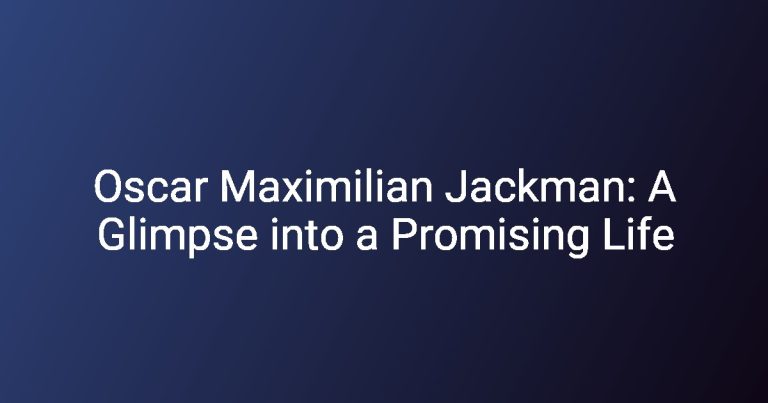Welcome to an in-depth exploration of celebrity fakes, a phenomenon that has captivated and challenged society. As we navigate the digital age, the creation and dissemination of manipulated content featuring celebrities have become increasingly prevalent and complex. This article aims to shed light on various aspects of celebrity fakes, from their historical origins to the ethical dilemmas they present.
##
A Brief Overview
Celebrity fakes are altered or manipulated media featuring famous individuals, ranging from photoshopped images to deepfakes, which use artificial intelligence to create hyper-realistic, forged content. These digital manipulations present an array of ethical considerations and practical challenges, impacting not only celebrities but also the public and digital platforms.
Throughout this article, we will trace the evolution of celebrity fakes, delve into the diverse forms they take, and examine their implications. We will explore the psychological impact on celebrities and the public, the legal complexities surrounding consent and intellectual property, and the ethical quagmire of navigating a landscape filled with fake news and disinformation.
Furthermore, we will discuss strategies for identifying and preventing the spread of celebrity fakes, highlighting the role of technology companies and social media platforms in this endeavor. The importance of media literacy and public awareness will also be emphasized, exploring strategies to empower internet users with critical thinking skills. Additionally, we will take a global perspective, examining varying approaches and legal battles concerning celebrity fakes, and concluding with a discussion of emerging technologies and potential solutions.
##
History of Celebrity Fakes
The history of celebrity fakes can be traced back to the early days of photography and photomontage techniques. Early instances of celebrity fakes, though not as technologically advanced as today, included stage-managed photographs and subtle manipulations of images to enhance or alter their subjects.
Evolution over Time
The nature of celebrity fakes has evolved significantly with advancements in technology. With the advent of digital imaging and photo editing software, the ease and accessibility of creating manipulated content increased dramatically. This evolution has been further accelerated by the rise of deepfakes, which use machine learning and artificial intelligence to create incredibly realistic media.
Technological Catalysts
The creation and dissemination of celebrity fakes have been facilitated by various technological advancements:
– Digital Imaging: Digital photography and editing software have made it relatively simple to manipulate images and videos, empowering even amateur creators.
– Machine Learning: This cutting-edge technology has enabled the creation of deepfakes, which are incredibly difficult to detect without specialized tools and expertise.
– Social Media & Online Platforms: These have provided vast channels for the rapid and widespread sharing of celebrity fakes, often leveraging the viral potential of captivating or controversial content.
##
Types of Celebrity Fakes
Celebrity fakes encompass a spectrum of manipulated media, with deepfakes emerging as one of the most alarming and sophisticated forms.
Deepfakes and Their Alarming Rise
Deepfakes utilize artificial intelligence to create hyper-realistic forged content, often by swapping the face of one individual with another. This can result in incredibly convincing video or audio content that appears genuine. The rise of deepfakes has sparked significant concern, given their potential to deceive and manipulate.
The Deepfake Creation Process
Creating deepfakes involves feeding a machine learning algorithm with vast amounts of data (images or videos) of the targeted individual. The algorithm then learns the unique characteristics of the person’s face, voice, or body movements, allowing it to generate highly realistic forgeries. While this process is intricate, it has become increasingly accessible to those with basic technical skills, making deepfakes a growing concern for celebrities and the public alike.
Other Forms of Celebrity Fakes
Beyond deepfakes, there are several other forms of celebrity fakes that have been utilized:
– Photoshopped Images: Manipulation of photographs using tools like Adobe Photoshop to alter appearances, clothing, or even add objects or individuals.
– Manipulated Videos: Video editing software is used to tamper with existing footage, removing or adding elements, changing dialogue, or altering appearances.
– Audio Recordings: Audio manipulation techniques can be used to synthesize speech or alter existing recordings, making celebrities appear to say things they never did.
The impact of these various forms of celebrity fakes ranges from amusement to concern, depending on the intent and context of the manipulation.
##
Impact and Ethics
The impact of celebrity fakes extends far beyond mere entertainment or amusement. It is a complex issue that intersects with privacy, consent, and the potential for harm, both to celebrities and the public at large. This section explores these ethical and psychological dimensions.
Psychological Impact
Celebrity fakes can have a significant psychological impact on both the celebrities featured and the public who view and consume this content. For celebrities, being the subject of manipulated content without their consent can feel like a violation of their personal agency and autonomy. It can also lead to unwanted media attention and public scrutiny.
For the public, especially young or impressionable audiences, celebrity fakes can distort perceptions of reality, leading to misunderstandings or false beliefs about the celebrities involved. It can also contribute to a general mistrust of media and the difficulty of discerning truth from fiction.
Invasion of Privacy & Legal Implications
The creation and dissemination of celebrity fakes, especially without the consent of the featured individuals, raises serious legal and ethical questions regarding privacy and intellectual property rights. In many jurisdictions, the non-consensual use of a person’s image or likeness can be a violation of privacy laws, and the unauthorized manipulation of an individual’s likeness could also constitute a breach of intellectual property rights.
These legal complexities are further compounded by the global nature of the internet, as different jurisdictions may have varying laws and interpretations regarding consent, privacy, and intellectual property.
Ethical Dilemmas & The Era of Disinformation
The presence of celebrity fakes in the era of fake news and disinformation presents a range of ethical dilemmas. The potential for these fakes to contribute to the spread of false or misleading information, especially in a political or social context, is a serious concern. This can lead to the erosion of trust in media and authorities, and potentially influence public opinion and decision-making.
It is important to navigate this complex landscape with an ethical framework that prioritizes the well-being of individuals, the integrity of media, and the health of democratic discourse.
##
Prevention and Detection
Given the multifaceted impact of celebrity fakes, it is crucial to explore strategies for identifying and preventing their creation and dissemination. This section delves into the tools, techniques, and collaborative efforts employed to combat this challenging issue.
Identifying Celebrity Fakes
The process of identifying celebrity fakes often involves a combination of human expertise and technological tools. Investigators and researchers rely on their knowledge of common manipulation techniques, trends, and indicators of authenticity. They also utilize advanced software and machine learning algorithms to detect anomalies in media that may indicate alteration or forging.
Techniques and Tools
The field of deepfake detection is rapidly evolving, with various techniques and tools being developed to tackle this challenge:
– Facial Analysis: Techniques that analyze the physical movement and behavior of individuals in video content, looking for inconsistencies that may indicate a deepfake.
– Audio Analysis: Analyzing audio patterns and speech characteristics to identify indicators of manipulation or synthesis.
– Advanced Machine Learning: Utilizing sophisticated algorithms that can detect subtle artifacts left by deepfake creation processes.
The Role of Technology Companies & Social Media Platforms
Given the scale and reach of social media platforms and online services, technology companies and platforms have a crucial role to play in combating celebrity fakes. Many platforms have implemented policies and guidelines for content moderation, including the removal of manipulated content, especially when it is presented as authentic or when it is non-consensual. Additionally, some platforms are investing in advanced detection technologies and collaborating with research institutions to stay ahead of the evolving techniques of deepfake creators.
##
Public Awareness and Education
The battle against celebrity fakes is not solely a technical one; it also requires a focused effort on public awareness and media literacy. Empowering individuals with the skills to discern authentic content from manipulated media is crucial in combating the spread and impact of celebrity fakes.
Why Media Literacy Matters
In an era of rapid information consumption and sharing, it is essential for internet users to develop critical thinking skills and a healthy skepticism towards media content. Media literacy education aims to teach individuals how to analyze and evaluate media messages, understand the techniques used to create content, and recognize the potential biases or inaccuracies present. By improving media literacy, we can empower individuals to make more informed decisions about the content they consume and share, thereby reducing the spread and impact of celebrity fakes and other forms of manipulated media.
Strategies and Initiatives
There are various strategies and initiatives that can be employed to promote media literacy and critical thinking among internet users:
– Educational Programs: Incorporating media literacy education into school curricula can help foster critical thinking skills from an early age, ensuring that future generations are equipped to navigate the complex digital landscape.
– Online Resources: Creating accessible online resources, such as tutorials, guides, or interactive tools, can provide users with the skills to identify and analyze media content. These resources could be developed by educational institutions, non-profit organizations, or even technology companies.
– Collaborative Efforts: Bringing together diverse stakeholders, including educators, researchers, technology companies, and content creators, can help develop comprehensive and effective strategies for promoting media literacy. This collaborative approach can lead to more innovative and impactful solutions.
##
Global Perspectives & Legal Responses
The phenomenon of celebrity fakes is not confined to any single jurisdiction or region, and the responses to this challenge have also varied globally. This section explores the differing approaches and legal battles surrounding celebrity fakes, highlighting the complexities and potential lessons that can be learned.
Varying Global Approaches
Different countries and jurisdictions have taken a range of approaches to tackling celebrity fakes:
– Regulatory Frameworks: Some countries have introduced specific legislation targeting deepfakes and other forms of manipulated media, often with a focus on protecting the privacy and consent of individuals.
– Self-Regulation: In some regions, the emphasis has been on self-regulation by technology companies and online platforms, with policies and guidelines governing the removal of manipulated content.
– Awareness Campaigns: Certain initiatives have focused on raising public awareness about the dangers of celebrity fakes and the potential for misinformation, encouraging a more critical approach to media consumption.
Notable Cases & Legal Battles
Several high-profile cases and legal battles have drawn attention to the challenges posed by celebrity fakes:
– United States vs. Begert: This case saw the first-ever criminal prosecution for deepfake creation, highlighting the potential for legal action against those producing manipulative content.
– Facebook vs. Deepfake Detection Challenge: In an effort to improve deepfake detection, Facebook launched a competition to encourage the development of advanced detection techniques.
– Various Celebrities vs. Paparazzi: There have been cases of celebrities suing paparazzi agencies for invasion of privacy, particularly in relation to the unauthorized use of their images in manipulated media.
Challenges and Opportunities
The global response to celebrity fakes presents both challenges and opportunities:
– Challenges: The complexity of legal jurisdictions and varying approaches to privacy and intellectual property present challenges for a coherent global response. The rapid evolution of deepfake technology also poses a significant challenge to detection and prevention efforts.
– Opportunities: Collaborative efforts among regulators, technology companies, and researchers can lead to the development of innovative solutions and best practices. By sharing knowledge and resources, the global community can work together to combat celebrity fakes more effectively.
##
Future Outlook & Potential Solutions
As the landscape of digital technology continues to evolve, so too will the techniques and challenges surrounding celebrity fakes. It is essential to consider emerging technologies and innovative solutions that can help address this complex issue.
Emerging Technologies
Several emerging technologies have the potential to impact the creation, detection, and prevention of celebrity fakes:
– Blockchain: This distributed ledger technology has the potential to enhance the verification of media content, ensuring its authenticity and integrity.
– Natural Language Processing (NLP): Advanced NLP techniques can be used to analyze and detect manipulated audio content, providing another layer of defense against celebrity fakes.
– Computer Vision: Computer vision algorithms can analyze visual elements of media, such as lighting, shadows, and artifacts, to identify indicators of manipulation.
Potential Solutions & Collaborative Efforts
In addition to technological advancements, collaborative efforts and innovative solutions can make a significant difference in combating celebrity fakes:
– Multi-Stakeholder Collaboration: Bringing together diverse stakeholders, including technology companies, social media platforms, researchers, legal experts, and representatives from the entertainment industry, can lead to comprehensive solutions that address the multifaceted nature of celebrity fakes.
– International Cooperation: Given the global nature of the internet and the reach of celebrity fakes, international cooperation is crucial. Sharing resources, research, and best practices can help jurisdictions with limited resources or expertise to better address this challenge.
– Innovative Partnerships: Forging partnerships between technology companies, media organizations, and non-profit entities can lead to the development of new tools, educational resources, and awareness campaigns that can have a significant impact on public awareness and media literacy.
##
Conclusion
The world of celebrity fakes is a complex and evolving landscape, presenting numerous ethical, technological, and social challenges. From the impact on celebrities and public perception to the legal and privacy implications, the phenomenon is multifaceted and requires a multi-pronged approach to address it effectively.
Throughout this article, we have explored the historical context, various forms, and impact of celebrity fakes. We have delved into the ethical considerations, the strategies for prevention and detection, and the importance of public awareness and education. Additionally, we have examined the varying global approaches and the emerging technologies that can shape the future of celebrity fakes.
As we navigate these challenges, it is essential to recognize the importance of collective efforts. Collaboration between technology companies, researchers, legal experts, and the public can lead to innovative solutions and a more informed and responsible digital society. Only through such collective action can we effectively combat celebrity fakes and promote a safe and trustworthy digital landscape.
**Table: Global Perspectives on Celebrity Fakes**
| Jurisdiction | Regulatory Approach | Key Cases/Initiatives |
|---|---|---|
| United States | Combination of self-regulation and emerging legislation | First criminal prosecution for deepfake creation (2022) |
| European Union | Focus on privacy and data protection regulations | General Data Protection Regulation (GDPR) addresses data manipulation |
| India | Emerging legislation and awareness campaigns | Recent legislation proposed to combat “morphed images” |
| Australia | Self-regulation and industry guidelines | Australian Competition and Consumer Commission guidelines for consumer protection |
##


